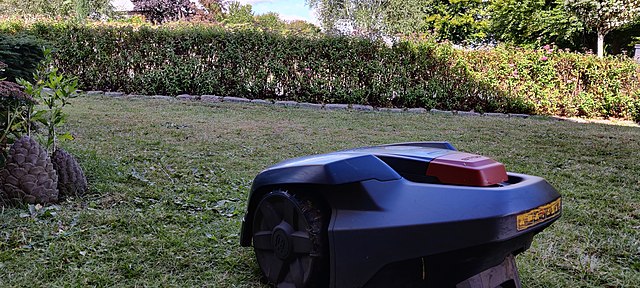Innovative garden design is revolutionising outdoor spaces, blending creativity with functionality to enhance both private gardens and public landscapes. This dynamic field integrates advancements in technology, sustainable practices and artistic concepts to create unique environments that are both beautiful and practical. Here are some key areas that highlight the most impactful innovations in Perth and Kinross garden design today.
Smart Technology Integration
Smart technology is at the forefront of innovative garden design, transforming how gardens are managed and experienced. Automated irrigation systems, which use sensors to monitor soil moisture levels, ensure that plants receive the right amount of water at the optimal times, conserving water and reducing manual labour. Smart lighting systems, controlled via smartphones or tablets, can create ambient lighting for evening enjoyment and improve security.
Additionally, robotic lawn mowers and drones for garden surveillance and maintenance are becoming more common. These technologies provide precise care and reduce the time and effort required for garden upkeep. Integration of virtual reality (VR) and augmented reality (AR) in garden planning allows designers and homeowners to visualise and modify garden layouts before implementation, ensuring the final design meets expectations.
Sustainable and Eco-Friendly Practices
Sustainability is a critical aspect of contemporary garden design in Kinross. Innovative approaches focus on creating self-sustaining ecosystems that require minimal external inputs. Xeriscaping, a landscaping method that reduces the need for irrigation by using drought-resistant plants, is gaining popularity, especially in regions prone to water scarcity.
Vertical gardens and green walls are also innovative solutions that maximise space, especially in urban areas. These installations not only enhance aesthetics but also improve air quality and provide insulation, reducing energy costs. Rain gardens, designed to capture and filter runoff, help manage stormwater and create habitats for wildlife.
Permaculture principles are increasingly incorporated into garden design, emphasizing the use of perennial plants, natural pest control, and soil regeneration techniques. By mimicking natural ecosystems, these gardens are more resilient and sustainable.
Artistic and Functional Design
The fusion of art and functionality can be a hallmark of innovative Perth and Kinross garden design. Designers are creating multi-purpose spaces that serve as extensions of indoor living areas, complete with outdoor kitchens, entertainment zones, and tranquil retreats. The use of modern materials like corten steel, glass, and sustainable wood, along with traditional elements, creates striking contrasts and visual interest.
Water features, such as fountains, ponds and rain chains, add sensory experiences to gardens, providing soothing sounds and reflecting light. Sculptural elements and installations bring artistic flair and can serve as focal points, drawing the eye and creating thematic coherence.
Edible landscaping is another innovative trend, where fruit trees, vegetable beds and herb gardens are integrated into ornamental gardens. This approach not only provides fresh produce but also educates and engages people in the process of growing their own food.
Climate Resilience and Adaptation
As climate change impacts become more evident, designing gardens that can withstand extreme weather conditions is essential. Innovations in this area include the use of resilient plant species that can tolerate fluctuations in temperature and moisture levels. Designing with microclimates in mind, such as creating windbreaks or shaded areas, helps protect vulnerable plants and ensures a garden’s longevity.
Permeable paving solutions, like porous asphalt or interlocking concrete pavers, reduce runoff and promote groundwater recharge. These materials are particularly useful in urban settings where impervious surfaces dominate.
